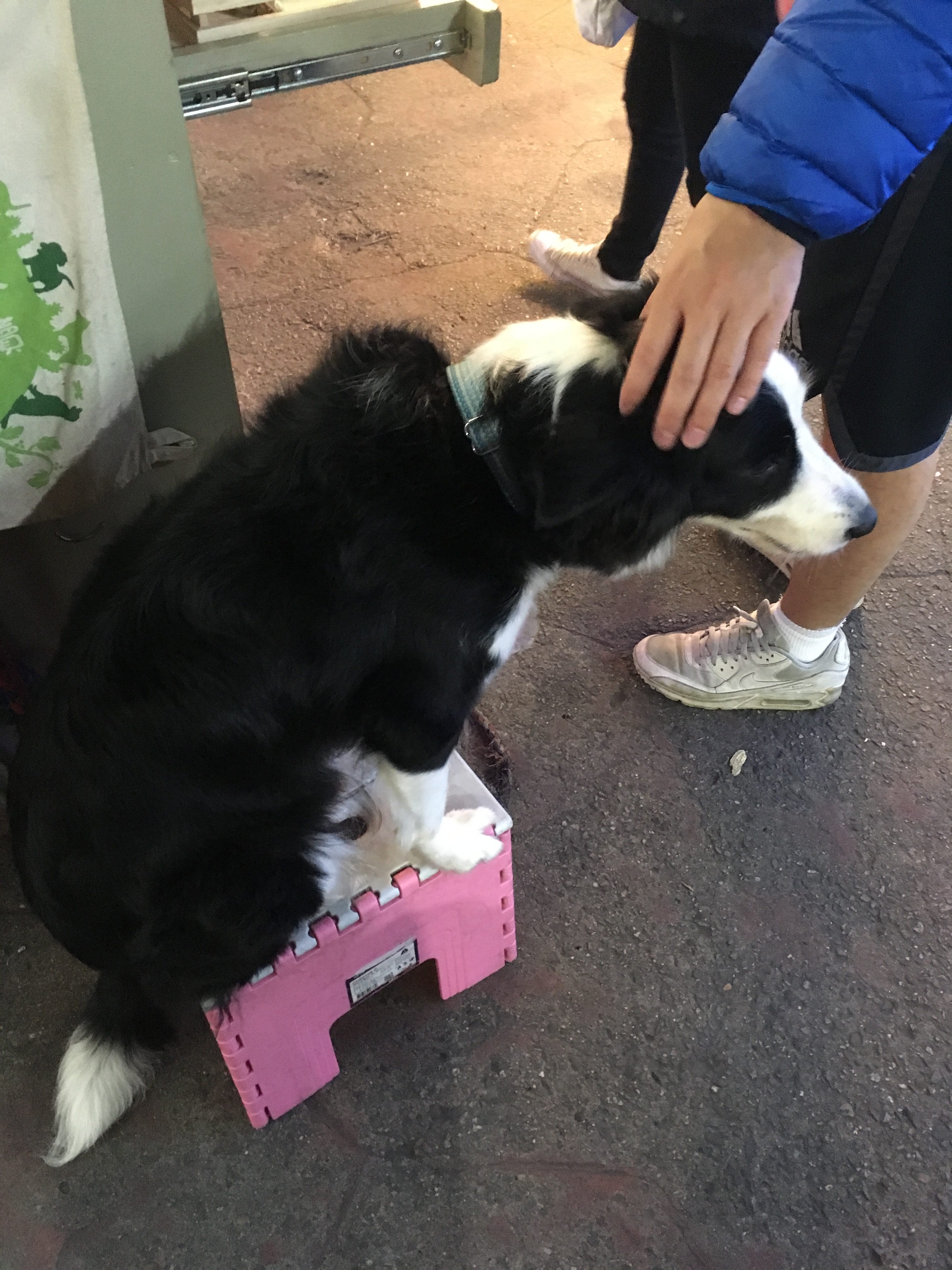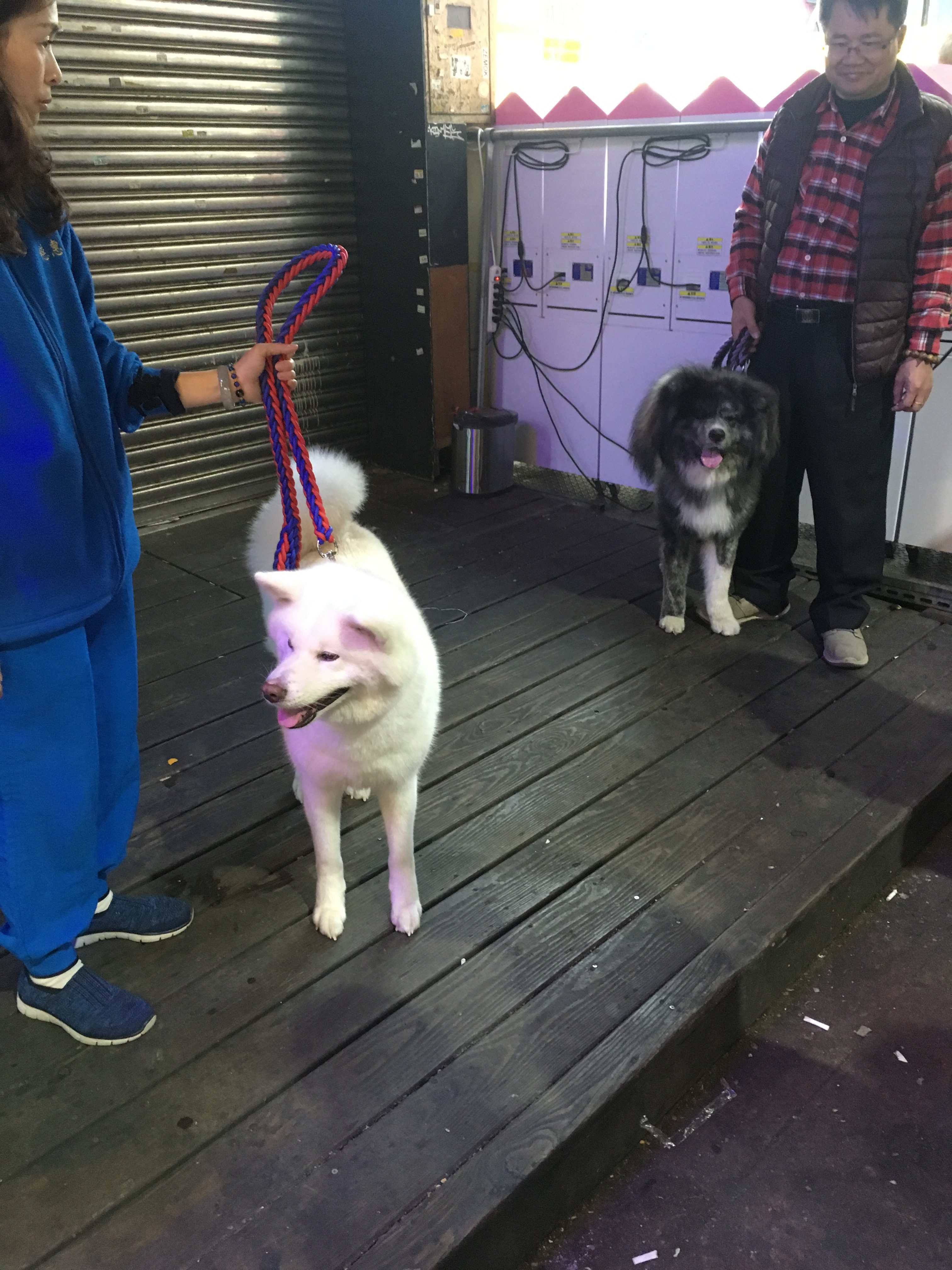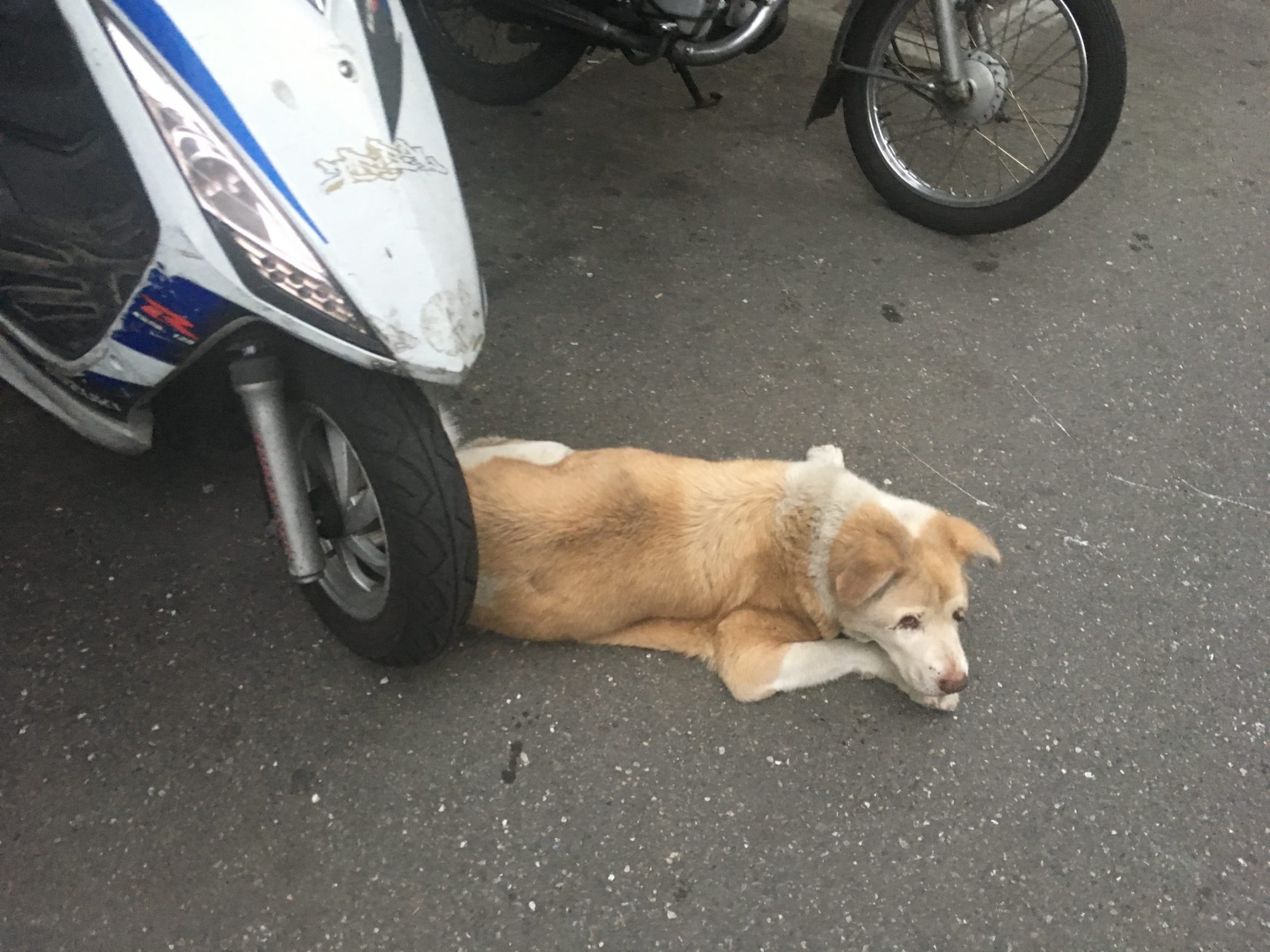Two years is a long time to live in a neighborhood, I’ve come to realize; I realize that because in that time, so many of the local dogs I knew have disappeared. It’s sad. Since the families which owned them still live here, I guess they are all dead now.
Of the dogs I no longer see around, “Confused Dog 1” and “Confused Dog 2” were ancient dogs that you could tell at a glance were not long for this world. Sometimes I would pass them lying in the middle of the street, asleep, and check if they were still breathing. Confused Dog 1 was an aged pit bull and Confused Dog 2 was much furrier; I never saw them together, but they wandered the neighborhood in the same state of apparent utter confusion; like the animated sprites for NPCs in old-school RPGs, they would take a few steps, look up, down, left, and right, and then take a few more steps. If there is an afterlife, I hope both are wandering around in the same state of apparent confusion.



The third dog we no longer see around was a brown, roundish, tube-shaped dog that lived in a scooter-repair shop, that had a permanent leg injury on one of its front legs and preferred to lie down instead of walking with a limp. I hope it’s not dead; maybe the owners let it lie around inside rather than taking it outside to walk and limp.
The only animal still around from when I first moved to this neighborhood is a cat we call “Lazy Cat,” an older female cat with a perpetually greasy forehead. Lazy Cat’s distinguishing feature is how lazy she is: while she will never let me pet her, she doesn’t run away until you are very, very close, and then—only then—will she finally summon up the energy to move. Lazy Cat seems to have a family taking care of her, but she wanders the neighborhood at will; when I see Lazy Cat, I envy her life of leisure.


I have catalogued a few other local animals in my head, mostly dogs; there’s a friendly border collie owned by a woman who runs a pet toy stall in the night market, who uses her dog to attract customers (and a lot of the toys are border collie-themed). There’s a jindo that lives in the area, and since jindos are fairly uncommon, people sometimes stop to take pictures of it. Its coat seems very unsuited for Taiwan’s tropical weather. The clerks in the 7-Eleven across the street from where I live, who seem to all live together and be heavy metal aficionados, also own a black chihuahua together; the side of its head is shaved.


I spend a lot of time thinking about cute animals, a way to cope with the nullity of contemporary existence.
That’s probably true of a lot of people. Pets might serve as what psychoanalyst Donald Winnicott called a “transitional object,” the comfort object that helps people cope with a loss. I suspect that this is why watching cute animals on the Internet is so popular in the bleakness of the present; I suspect there is a link between the popularity of pet videos and capitalist realism. That is, pets fill in for the sense of loss of any alternatives to a humdrum existence defined by the work grind, the lack of meaningful interpersonal relations outside workplace interactions or mediated by some sort of give-and-take relations, and the lack of any other future in sight. Pets provide unconditional warmth and affection, but for those who cannot own pets, videos on the Internet may suffice.
In Taiwan, some social commentators in Taiwan have attributed the fixation on pets—which are called “Fur Children” (毛孩子) by some, as an affectionate term—to emotional transference: in a time of declining birthrate, people transfer onto their pets the emotions they’d have previously reserved for children; in a time of low salaries and long work hours, fewer people are having children.
On the other hand, in a densely-packed primarily urban society like Taiwan, the same local cat or dog can be passed by and seen—and remembered—by thousands of people in a single day. A single cat or a dog can become a local fixture. In Taiwan, neighborhood cats or dogs can become recognizable local icons. Taiwan has a lot of strays, but some of them have a lot of Facebook pages, even websites.
How many other people in my neighborhood have their own names and memories—and sense of place—for the same dogs and cats? Do they tell stories about Confused Dog 1 (and 2), Lazy Cat, and Mean Corgi? This would be a form of local place-making, or maybe even a form of local mythologizing.
It may not be surprising, then, that in many cases, animals serving as the anchor points of the politics of the local. In 2016, when a well-loved stray cat on the National Taiwan University (NTU) campus—known far and wide as “Big Orange”—was killed by a student, anger erupted: a crowd of thirty, assembled outside the courtroom during the day of the trial, attacked the killer as he was leaving. Probably not the best response to the matter, but a group of around 100 animal activists also protested peacefully that day.
I’d be hard pressed to name other mass mobilizations of that size in response to the death of a single cat. But maybe by virtue of living in a crowded part of the city—and being passed by thousands of people a day—Big Orange was present in the everyday “life worlds” of those people, the shared world that subjects experience together. So it’s not that surprising that the murder of Big Orange ruptured the life worlds of so many people, stirring them to the forms of collective action that social media makes so much easier to organize. It’s not so different than how the disappearance of a few local animals seems to me like the passage of time.
This kind of “hyperlocality” runs deep in Taiwan; for over ten years, there have been heated demonstrations calling for the preservation of historic tree threatened by the construction of the Taipei Dome. It’s actually become a national-level politics: an entire third party, the Trees Party, grew out of the struggle to preserve the trees; a candidate from the Social Democratic Party first became public known through these protests. It shows how powerful the “local” is in Taiwan, a large or at least medium-sized country by population, but so geographically small as to be highly dense.
There are three corgis in the area.



The first, “Mean Corgi,” lives in a strange building called “The Good Life,” at least according to what the sign in front says. It looks like a living room, except with big, glass windows like that of a storefront, and with a work desk set up in the middle. I originally thought it was a co-working space, but after a few years of living here, I’ve come to the conclusion that it’s just the home of a very exhibitionistic family that likes to show off how comfortable their home is–and how many cute animals they own. Mean Corgi’s face looks like Richard Nixon for some reason, and barks aggressively when we pass by. Sometimes I see Mean Corgi lying there, looking as if tormented by dark thoughts, as though thinking, “There has to be more to life, what did I do to deserve this?”
Mean Corgi does not seem to get much exercise, having become large and round, comparable to a small sheep.
The second corgi belongs to a pet shop near where I live; as it happens, I live by a large collection of pet shops by east end of the Tonghua Night Market, as does this corgi, who seems to be a permanent resident in one of them. It’s the only adult dog in a shop that only sells puppies; I wonder if the puppies see it as a mentor. The third is a smaller, youngish-looking corgi, which looks a good deal healthier than the other two, probably because of how frequently its owner takes it for walks.
I also see a large number of poodles.


There is a shop by the night market called “Lady Gogo,” since “go” (狗) is a phonetic rendering of the Mandarin for “dog.” The shop exclusively trains pet owners to groom their poodles; there are poodle dolls in the back of the store and sometimes I see a class of poodle owners in the store, their poodle dolls strapped into harnesses, practicing grooming animals which are not squirming around. I wonder what the poodles think of these dolls. Do they even realize the dolls are created in their image? Do they find them uncanny, the way humans find mannequins uncanny? Or is it that, just as humans have an anthropomorphic perception of animals, they perceive humans and their otherwise inscrutable actions according to their own animal nature?

Brian Hioe






